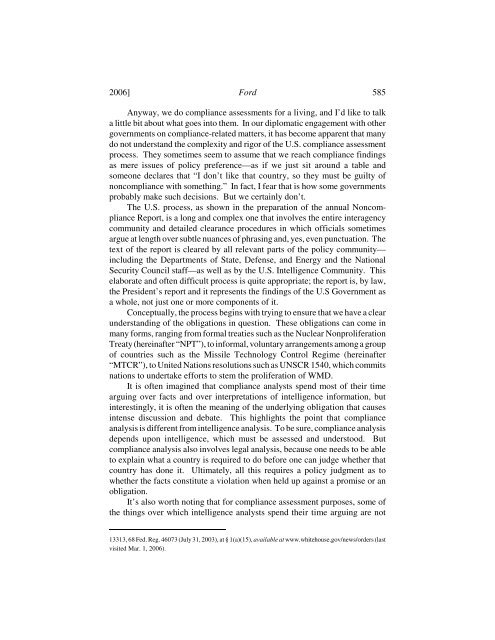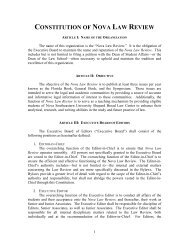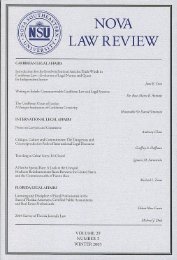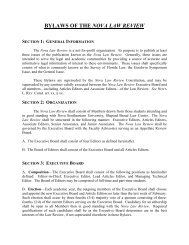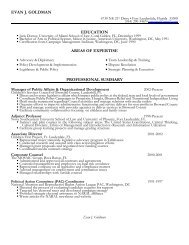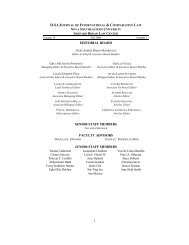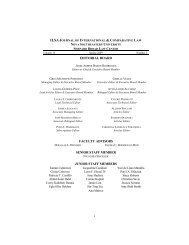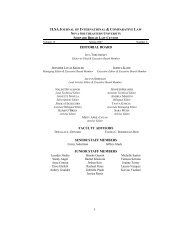Volume 12:2 - Shepard Broad Law Center - Nova Southeastern ...
Volume 12:2 - Shepard Broad Law Center - Nova Southeastern ...
Volume 12:2 - Shepard Broad Law Center - Nova Southeastern ...
Create successful ePaper yourself
Turn your PDF publications into a flip-book with our unique Google optimized e-Paper software.
2006] Ford 585Anyway, we do compliance assessments for a living, and I’d like to talka little bit about what goes into them. In our diplomatic engagement with othergovernments on compliance-related matters, it has become apparent that manydo not understand the complexity and rigor of the U.S. compliance assessmentprocess. They sometimes seem to assume that we reach compliance findingsas mere issues of policy preference—as if we just sit around a table andsomeone declares that “I don’t like that country, so they must be guilty ofnoncompliance with something.” In fact, I fear that is how some governmentsprobably make such decisions. But we certainly don’t.The U.S. process, as shown in the preparation of the annual NoncomplianceReport, is a long and complex one that involves the entire interagencycommunity and detailed clearance procedures in which officials sometimesargue at length over subtle nuances of phrasing and, yes, even punctuation. Thetext of the report is cleared by all relevant parts of the policy community—including the Departments of State, Defense, and Energy and the NationalSecurity Council staff—as well as by the U.S. Intelligence Community. Thiselaborate and often difficult process is quite appropriate; the report is, by law,the President’s report and it represents the findings of the U.S Government asa whole, not just one or more components of it.Conceptually, the process begins with trying to ensure that we have a clearunderstanding of the obligations in question. These obligations can come inmany forms, ranging from formal treaties such as the Nuclear NonproliferationTreaty (hereinafter “NPT”), to informal, voluntary arrangements among a groupof countries such as the Missile Technology Control Regime (hereinafter“MTCR”), to United Nations resolutions such as UNSCR 1540, which commitsnations to undertake efforts to stem the proliferation of WMD.It is often imagined that compliance analysts spend most of their timearguing over facts and over interpretations of intelligence information, butinterestingly, it is often the meaning of the underlying obligation that causesintense discussion and debate. This highlights the point that complianceanalysis is different from intelligence analysis. To be sure, compliance analysisdepends upon intelligence, which must be assessed and understood. Butcompliance analysis also involves legal analysis, because one needs to be ableto explain what a country is required to do before one can judge whether thatcountry has done it. Ultimately, all this requires a policy judgment as towhether the facts constitute a violation when held up against a promise or anobligation.It’s also worth noting that for compliance assessment purposes, some ofthe things over which intelligence analysts spend their time arguing are not13313, 68 Fed. Reg. 46073 (July 31, 2003), at § 1(a)(15), available at www.whitehouse.gov/news/orders (lastvisited Mar. 1, 2006).


